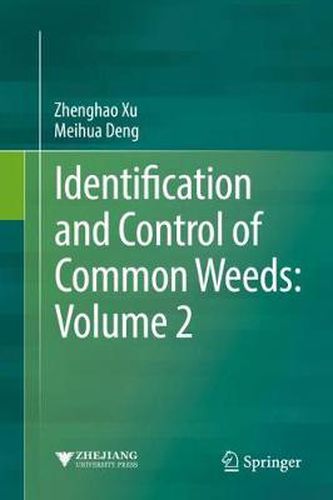Readings Newsletter
Become a Readings Member to make your shopping experience even easier.
Sign in or sign up for free!
You’re not far away from qualifying for FREE standard shipping within Australia
You’ve qualified for FREE standard shipping within Australia
The cart is loading…






This book introduces readers to nearly 600 common weeds. In addition to essential information, each chapter includes photos for a specific type of weed to show its morphology in different growth periods, such as seedling, root, flower, fruit, and mature plant. The book also discusses control measures, including agricultural, chemical, physical, biological, and comprehensive methods. The Volume2 mainly focuses on fern and 216 species of weeds of magnoliids or dicotyledoneae.
With the development of society and economics, weeds have become a recurring problem. In particular, the exotic, invasive, and quarantine weeds have spread dramatically and rapidly. On the other hand, many people, even those who are engaged in weed control, do not (or cannot) distinguish between weeds. Thus there is significant demand for illustrations of weed morphologies, as well as information on their control measures. This book offers a valuable, practical guide for all those working in the fields of crop cultivation, plant protection and quarantine management.
$9.00 standard shipping within Australia
FREE standard shipping within Australia for orders over $100.00
Express & International shipping calculated at checkout
This book introduces readers to nearly 600 common weeds. In addition to essential information, each chapter includes photos for a specific type of weed to show its morphology in different growth periods, such as seedling, root, flower, fruit, and mature plant. The book also discusses control measures, including agricultural, chemical, physical, biological, and comprehensive methods. The Volume2 mainly focuses on fern and 216 species of weeds of magnoliids or dicotyledoneae.
With the development of society and economics, weeds have become a recurring problem. In particular, the exotic, invasive, and quarantine weeds have spread dramatically and rapidly. On the other hand, many people, even those who are engaged in weed control, do not (or cannot) distinguish between weeds. Thus there is significant demand for illustrations of weed morphologies, as well as information on their control measures. This book offers a valuable, practical guide for all those working in the fields of crop cultivation, plant protection and quarantine management.